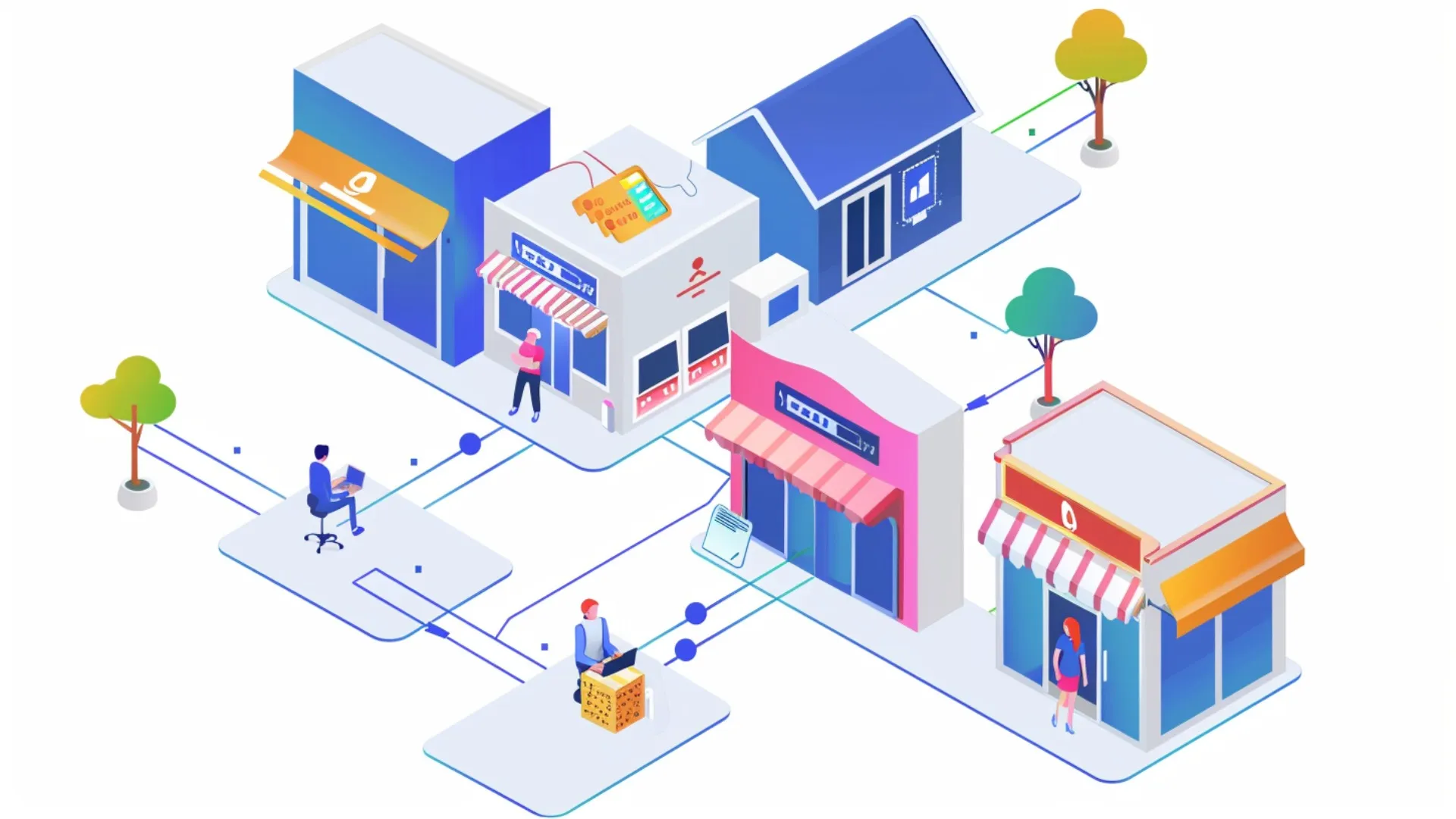
Control all your branches from a single panel with centralized management, branch-level permissions, shared data, and map-based visibility.
Service businesses such as dry cleaning, carpet cleaning, tailoring, shoe repair, and car wash often start with a single branch and quickly expand to multiple locations. However, as the number of branches grows, managing stock, staff, delivery schedules, cash flow, and customer service becomes increasingly complex. The Multi-Branch Management module allows you to monitor and manage all branches from a single panel. This standardizes operations, improves efficiency, and ensures that finance and customer experience are managed at the branch level in line with central strategy.
The module stores data such as customers, orders, products/labels, prices, campaigns, and invoicing in a unified model. From the central panel, you can see in real time how many orders each branch has received, how many are ready, or awaiting delivery. While you can set branch-specific price lists or promotions, core business rules (delivery SLA, mandatory fields, return procedures) are applied equally across all branches. Any rule updated centrally is instantly reflected in all branch panels.
It’s not only important that data is integrated but also clear who can see what. Role-based authorization ensures branch managers only see their own branch’s data, while HQ managers can monitor everything. Accounting roles can access billing and collections screens, while delivery staff only see their assigned orders and routes. This preserves both performance and data security.
Each branch may serve a different demographic or face different competition. The module supports branch-based price lists and campaigns. For example, you may price “shirt cleaning” differently in a city center vs. a suburban branch. Similarly, a “4 for 3” campaign can be restricted to certain branches. Tax and e-invoice rules can also be applied with branch-specific series/settings, keeping all records compliant with regulations.
For businesses that provide pickup/delivery, map-based visibility of branches is critical. The system displays branch zones and active orders on a map. Orders clustered in the same area can be grouped into the most efficient route. Even if the branch changes, the customer’s location and order history remain instantly accessible via the shared database. Drivers can view their assigned routes on mobile devices and update order statuses directly from the field.
Multi-Branch Management integrates every step from order intake to delivery. An order created at one branch is matched to a product with label printing; if processed at another branch, a transfer record is created, preserving traceability. Branch-level collections flow into the central cash register, while e-Invoice/e-Archive integration lets HQ track all documents generated at each branch. With POS and online payment integrations, all amounts are automatically reflected in branch and HQ finance reports, regardless of payment type.
In industries like carpet cleaning or tailoring, certain workloads may be concentrated in specific branches. The inter-branch transfer feature balances workloads accordingly. Orders can be transferred to another branch or facility; the process is tracked with transfer labels. With pool logic, if one branch is overloaded while another is idle, the system suggests redistribution. This eliminates bottlenecks and shortens overall turnaround time.
Multi-branch structures require comparative metrics for decision-making. The panel provides KPIs such as branch revenue, transaction count, average basket, processing time per order, rework rate, customer complaint count, and overdue balances. Targets vs. actuals are shown side by side; underperforming branches can be analyzed to identify root causes and corrective actions. Reports can be exported to Excel/PDF with one click.
Each branch’s staff is tracked individually, while HQ monitors overall performance and costs from one screen. Staff performance (scans, speed, return rate, customer feedback) is measured. Training checklists and work safety reminders can be planned for new staff. While shifts are managed locally, HQ can reassign staff in cases of unexpected workload surges.
Consumables like cleaning chemicals, packaging, or barcode rolls are tracked per branch. Minimum stock levels can be set, with alerts triggered when they drop below threshold. HQ can purchase in bulk and distribute to branches. Stock consumption reports reveal waste or misuse at specific branches.
When a customer calls, the system can trigger screen-pop to open the customer card, regardless of which branch receives the call. Even if the customer previously used another branch, past records are instantly accessible from the shared database. Staff can recognize and assist customers on the first call. Cross-branch call routing ensures the customer is connected to the right team without delays.
Maintaining consistent quality across multiple branches requires standard operating procedures (SOPs). The module provides checklists for intake, sorting, processing, quality control, packaging, delivery, and returns. During branch audits, these lists are used for scoring, with tasks assigned for any deficiencies, tracked until resolved.
Branches must keep working even during internet outages. The system allows critical screens to remain functional in temporary offline mode, storing data in local cache until it automatically syncs when connectivity is restored. Cash register operations, order intake, and status updates continue without disruption.
Customer data protection and access logging are mandatory across all branches. Security is ensured with role-based access, two-factor authentication, strong password policies, and audit logs. Communication consents (SMS, WhatsApp, email) are centrally managed and logged. Requests under the right to be forgotten can be applied from HQ.
In franchise or dealership models, each branch may operate as an independent company but still work on a shared platform. The module supports a multi-tenant setup, allowing each company to manage its own e-invoice and financial settings while maintaining standardized screens and reports at the brand level. This preserves both independence and consistency.
Multi-Branch Management addresses the growing need for control, speed, and standardization in expanding service businesses. By monitoring all branches from a single panel, you unify orders, labels, invoicing, stock, and delivery flows. Role-based permissions and strong reporting ensure data-driven decisions, while imbalances between branches are quickly corrected. The result is error-free, transparent operations, high customer satisfaction, and sustainable profitability.

Create a free demo account with Aktif Müşteri POS Software and try it for 15 days without any fees!